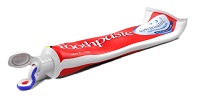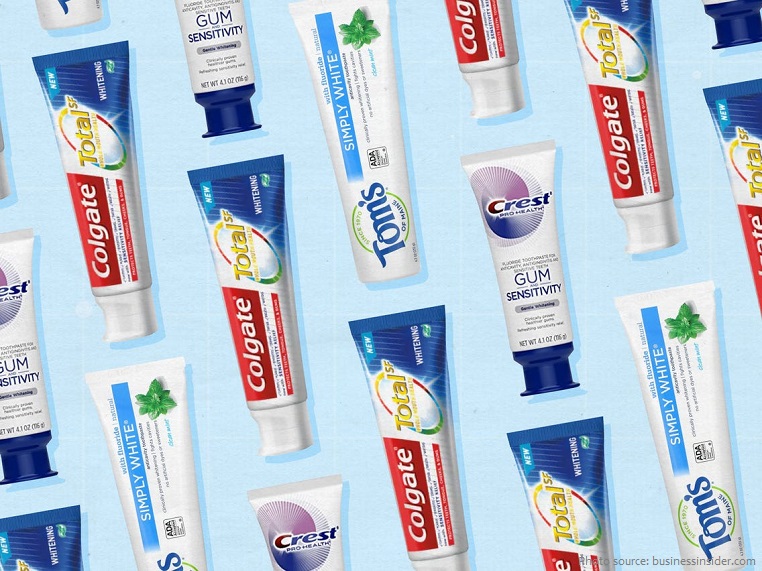
Toothpaste is a paste or gel dentifrice used with a toothbrush to clean and maintain the aesthetics and health of teeth.
Egyptians are believed to have started using a paste to clean their teeth around 5000 BC, before toothbrushes were invented. Ancient Greeks and Romans are known to have used toothpastes, and people in China and India first used toothpaste around 500 BC.
Ancient toothpastes were used to treat some of the same concerns that we have today – keeping teeth and gums clean, whitening teeth and freshening breath. The ingredients of ancient toothpastes were however very different and varied. Ingredients used included a powder of ox hooves’ ashes and burnt eggshells, that was combined with pumice. The Greeks and Romans favoured more abrasiveness and their toothpaste ingredients included crushed bones and oyster shells. The Romans added more flavouring to help with bad breath, as well as powdered charcoal and bark. The Chinese used a wide variety of substances in toothpastes over time that have included ginseng, herbal mints and salt.
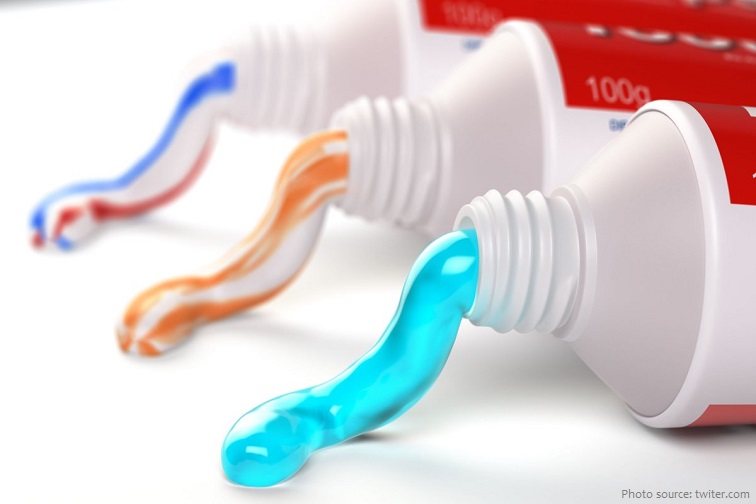
Fast forward to 50 BC, and we find that toothpaste in China and India was perhaps a little more pleasing to the palette. They added herbal mints, Ginseng, and herbs to their tooth powders and pastes.
Later, the Egyptians stepped up their game with regard to toothpaste and began adding dried iris flowers, mint, rock salt, and pepper to their “toothpaste.”
It’s even reported that people once used a powder created from burnt bread to brush their teeth. We’re not sure how this worked, but we’re reasonably certain that teeth didn’t look any whiter after brushing with this substance!
The development of toothpastes in more modern times started in the 1800s. Early versions contained soap and in the 1850s chalk was included. Betel nut was included in toothpaste in England in the 1800s, and in the 1860s a home encyclopaedia described a home-made toothpaste that used ground charcoal.

During the 1850s, a new toothpaste in a jar called a Crème Dentifrice was developed and in 1873 Colgate started the mass production of toothpaste in jars.
In 1880, Doctor Washington Sheffield of New London, CT manufactured toothpaste into a collapsible tube, Dr. Sheffield’s Creme Dentifrice. He had the idea after his son traveled to Paris and saw painters using paint from tubes. In York in 1896, Colgate & Company Dental Cream was packaged in collapsible tubes imitating Sheffield. The original collapsible toothpaste tubes were made of lead.
By 1900, a paste made of hydrogen peroxide and baking soda was recommended for use with toothbrushes. Pre-mixed toothpastes were first marketed in the 19th century, but did not surpass the popularity of tooth-powder until World War I.
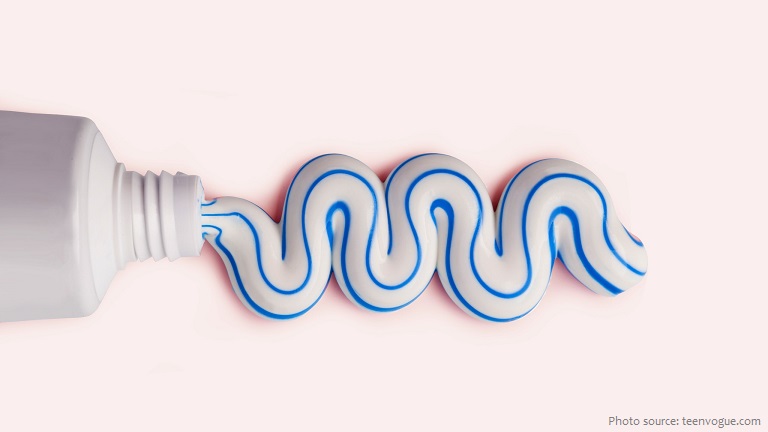
Until after 1945, toothpastes contained soap. After that time, soap was replaced by other ingredients to make the paste into a smooth paste or emulsion – such as sodium lauryl sulphate, a common ingredient in present-day toothpaste.
In the second half of the 20th century modern toothpastes were developed to help prevent or treat specific diseases and conditions such as tooth sensitivity. Fluoride toothpastes to help prevent decay were introduced in 1914. Toothpastes with very low abrasiveness were also developed and helped prevent the problems caused by overzealous brushing.
Striped toothpaste was invented by Leonard Marraffino in 1955. The patent was subsequently sold to Unilever, who marketed the novelty under the Stripe brand-name in the early 1960s.
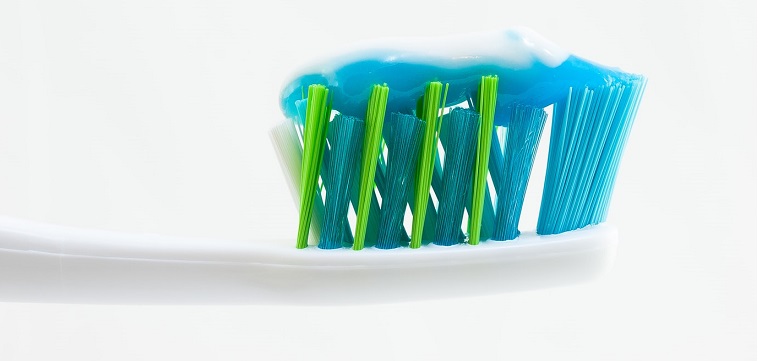
Toothpastes today typically contain fluoride, colouring, flavouring, sweetener, as well as ingredients that make the toothpaste a smooth paste, foam and stay moist. Toothpaste in tubes is used throughout the world and has been a very successful invention.
The three most common flavorants are peppermint, spearmint, and wintergreen. Toothpaste flavored with peppermint-anise oil is popular in the Mediterranean region. These flavors are provided by the respective
oils, e.g. peppermint oil.
There are many unusual toothpaste flavors available including pine, bacon, licorice, cupcake, pickle, coffee, chocolate, eggplant.
Alternatively, unflavored toothpastes exist.
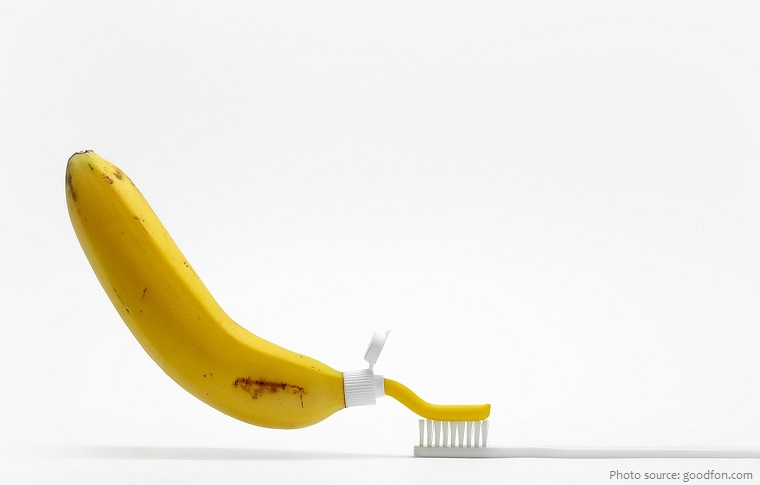
At $100 a tube, Theodent 300 is the most expensive toothpaste in the world. This toothpaste is filled with a blend of minerals and the brands proprietary ingredient Rennou, a naturally-occurring extract found in cocoa bean, a patented ingredient discovered by Dr. Tetsuo Nakamoto. The company claims that this toothpaste is able to strengthen enamel and make teeth healthier.
The longest line of toothpaste tubes consists of 3,165 toothpaste tubes and was achieved by Oral-B (Italy), in Milan, Italy, on 15 June 2019.
The largest tube of toothpaste measures 2.957 m (9.7 ft) long and weighs 780 kg (1,719 lb). It was made for the Zhonghua toothpaste brand by Unilever in Shanghai City, China and was unveiled on 20 September 2005.
The largest collection of toothpaste tubes is 2,037 and belongs to Val Kolpakov (USA), in Alpharetta, Georgia, USA, on 15 June 2012. The collection consists of 2,037 different tubes of toothpaste from all over the world, including items from Japan, Korea, China, India and Russia.
The fastest time to empty a tube of toothpaste using only one hand is 5.95 seconds and was achieved by André Ortolf (Germany) in Augsburg, Germany, on 18 November 2014.
